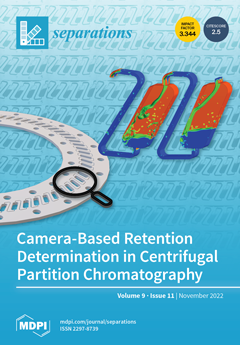Over the past few years, research studies on the therapeutic benefits of medicinal plants with potent antioxidant activity and few side effects have grown significantly. This has sparked interest in determining whether naturally occurring antioxidants could take the place of synthetic antioxidants, which are currently being constricted because of their toxic and carcinogenic properties. The identification and quantification of phytochemicals in the methanolic extract of
Kigelia pinnata fruits was measured using gas chromatography–mass spectrometry (GC-MS) and ultra-high-performance liquid chromatography–mass spectrometry (UPLC-MS/MS) techniques. Additionally, the methanolic extract of fruits was used to determine antioxidant activity. Free radical-scavenging (DPPH) and ferric ion-reducing antioxidant power were measured using spectrophotometry, and total antioxidant capacity (TAC) was compared with two common antioxidants, vitamin C and α-tocopherol. Moreover, mature fruits have high DDPH, ferric ion-reducing antioxidant power and total antioxidant capacity. Furthermore, mature fruits have high levels of total phenolic, flavonoid, and tannin content; these compounds are thought to be the sources of the antioxidant activity. The major constituents of the methanolic extracts from the mature fruits of
K. pinnata were found to be larixinic acid, 3,5-Dihydroxy-6-methyl-2,3-dihydro-4H-pyran-4-one (DMDP), and 5-Hydrxoymethylfurfural. We performed the elemental analysis of the whole fruit. Huh-7 (liver cancer), PANC-1 (pancreatic cancer), Colo-205 (colorectal cancer), HT-29 (colorectal cancer), SNU-16 (gastric carcinoma), SW620 (colorectal adenocarcinoma) and HCT116 (colon carcinoma) were tested in vitro for anticancer activity. Both methanolic and ethyl acetate extracts of mature fruits had a positive effect on all cancer cell lines as compared to the doxorubicin drug. In addition, the methanolic extracts of mature fruits showed more potent cytotoxic effects than the ethyl acetate extracts. Moreover, the most pronounced cytotoxic effects of the methanolic extract were detected in SW620 (colorectal adenocarcinoma), with an IC
50 value of 6.79 μg/mL, SNU-16 (gastric carcinoma), with and IC
50 value of 8.69 μg/ ml, and in PANC-1 (pancreatic cancer) with an IC
50 value of 10.34 μg/mL. Moreover, the results show that the water, ethyl acetate and methanolic extracts of mature fruits have antioxidant capacity, ferric ion-reducing antioxidant power, DPPH scavenging activity and also anticancer activity. Therefore, the present study suggests that the phytochemical profiles of mature fruits of
K. pinnata may be used as potential natural antioxidants and anti-cancer cell lines.
Full article





